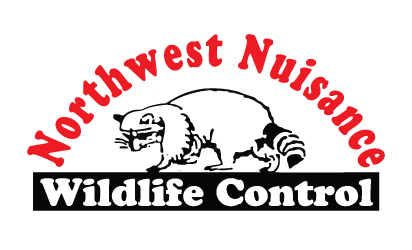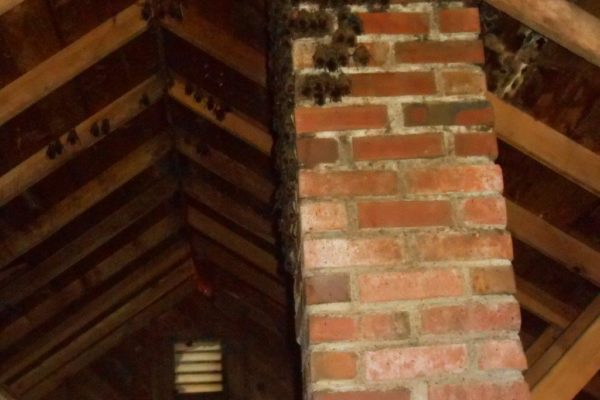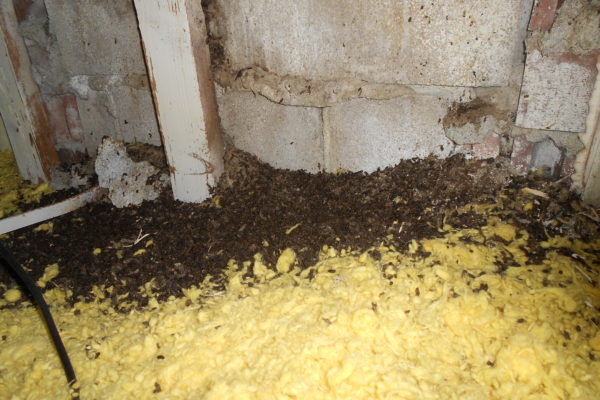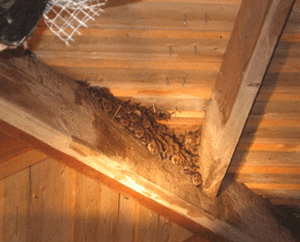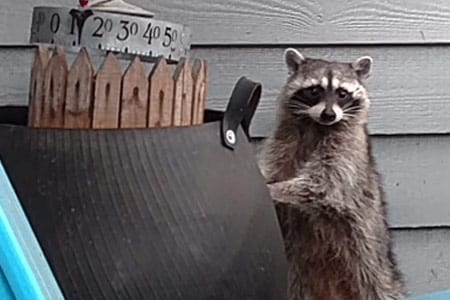
Washington State is home to more than 15 species of bats which are immensely beneficial to the environment and habitats they occupy. All species of bats in Washington are insectivores (insect eaters). They are voracious predators and can consume their body weight in insects in a single night.
Bats will emerge at dusk (15-30 minutes before dark) to hunt using echolocation (similar to whales) to target prey. Bats often will catch insects using their wing and tail membranes and eat in mid flight.
Why have your bats removed?
Most common human/bat conflicts arise when bats occupy human structures. Bats will roost or loaf in homes, barns, bridges, commercial buildings, dock marinas and many other areas they find suitable. Manmade structures have a tendency to create perfect bat habitat. Bats may even enter into the living spaces of homes. Removing bats from any structure requires a great deal of time, knowledge, and attention to detail by the skilled provider. It also requires understanding and patience by the consumer. The most successful method of ridding bats from a structure is through exclusion. This process is called a bat eviction.
Bats must be “built-out” of structures. This is a time consuming tedious procedure. Proper exclusion along with the use of bat cones allows bats to fly out and not re-enter the structure. The exclusion work must be very meticulous as areas that are not closed will allow bats to gain access once again. Bat cones are a simple device that allows bats to fly out but not fly back in. Bats can enter a round opening the size of a dime or an opening 3/8 inches wide by ¾ inches long regardless of orientation.
When to have your bats removed?
Bat work must be done at the appropriate time of year to avoid separating mothers from young called pups, or entombing hibernating bats. Appropriate times to do bat evictions in the Puget Sound vary but a good rule of thumb is Mid March-Mid May, then again from Mid August-Mid October. Bat eviction is not recommended during the rest of the year.
The mid March-mid May eviction window is due to bats emerging from hibernation (mid-March) and before they have birthed their pups (mid-May). Exclusion prior to this window may trap bats inside of the structure during a critical time when bats’ energy stores are low and they need to feed.
In Western Washington most species of bats have their pups in the middle to latter part of May. Depending on species, bat pups either stay in the roost or ride with the mother as she flies out nightly to feed. This is the reason the bat eviction process should not be conducted mid-May through mid-August. The pups are not able to fly and leave the roost; exclusion traps them inside where they will likely die.
By Mid to late August the bat pups are able to fly and feed. This is the reason bat evictions can be performed mid August-Mid October. However, at the end of October as temperatures start to drop and availability of prey decreases some bats will migrate. Bats migrate to their winter roost or hibernacula and enter Torpor (a form of hibernation) to wait out the cold weather. Bat evictions should not be performed during hibernation (mid-October to mid-March) as this will trap bats inside where they will die.
Evicting bats during the recommended windows is important so that bats are not killed indiscriminately. Native bat populations are currently stressed by White Nose Syndrome. White Nose Syndrome or WNS is a devastating disease affecting North American bats. The syndrome was first documented in February 2006 in New York state. WNS has killed 5.7 million bats and has spread reaching Washington in 2016. The fungus grows on the muzzle and wings of bats, creating a visible white moldy appearance.
Bats with WNS awaken during hibernation more frequently depleting their fat stores. Death is cause by starvation, wing damage, dehydration and inability to regulate body temperature. Performing bat evictions at the wrong time of year or using unacceptable improper methods increases risk for local bat populations. Bats are valuable ecologically as well as economically. Bats save $3 billion dollars annually in the US Agriculture industry, eating harmful crop pests.
Health Concerns regarding bats
There are two main public health concerns regarding bats. When bat droppings build up it can promote growth of fungal spores called histoplasmosis. Histoplasmosis is not specific to bat guano. The spores are commonly found in bird and bat droppings.
Histoplasmosis spores when airborne can cause respiratory infection. For histoplasmosis to become a problem large amounts of moist guano is needed. Generally speaking this does not happen frequently in Washington State but is more common in eastern states.
The other health concern associated with bats is the rabies virus. Rabies is contracted by coming into contact with bat saliva or brain matter in a break in the skin or a mucous membrane. Rabies cannot be contracted from bat guano, bat urine or bat blood. A very low percentage, 1-3%, of bats in Washington has the rabies virus. Bats should never be handled barehanded. If bats are found in a room where someone has been sleeping, there is an unattended child or a bat bite suspected, it is recommended that you contact your healthcare professional.
Efforts should be made to capture the bat so that it can be tested for the rabies virus. Rabies is a very serious health concern that if not diagnosed and treated is usually 100% fatal. Not a single other documented virus has a 100% fatality rate in humans. Anyone who suspects they have been in contact with a bat should consult their health care provider.
What not to do
Trapping bats inside should be avoided for several reasons. Bats closed off from exterior access are more likely to go inside the human occupied portions of the building increasing the likelihood of human/bat conflicts. Additionally, bats that are trapped inside will die. Not only does this have a negative impact on the bat population it can cause secondary issues such as an odor and insect problems.
Bats will exhibit another behavior called loafing. Bats may often hang under a covered porch to rest, digest and socialize. It may be the case that bats are not entering these structures anywhere; only loafing.
Don’t let a neglected crawlspace or attic cause problems for your home!
Our team provides expert crawlspace cleanouts, insulation removal, and odor control to keep your space safe, dry, and pest-free.
